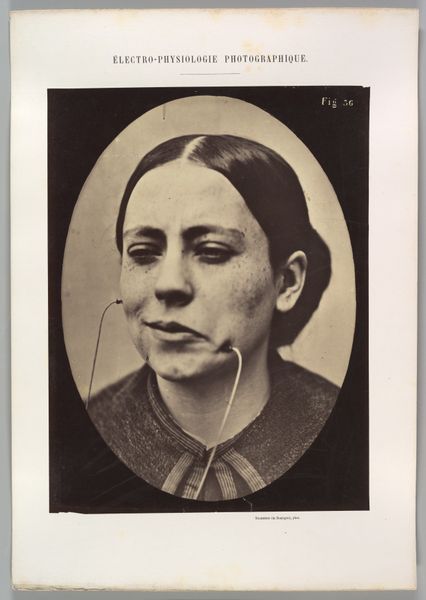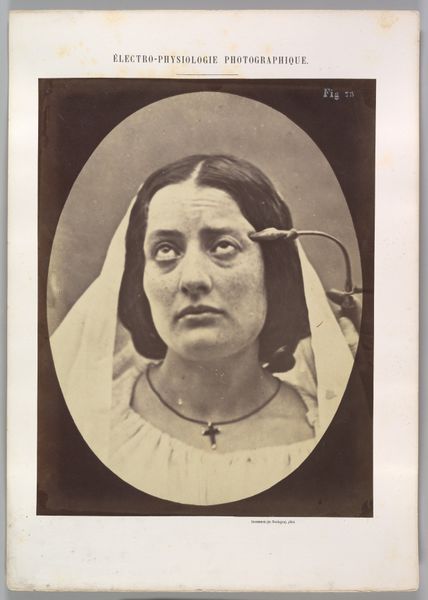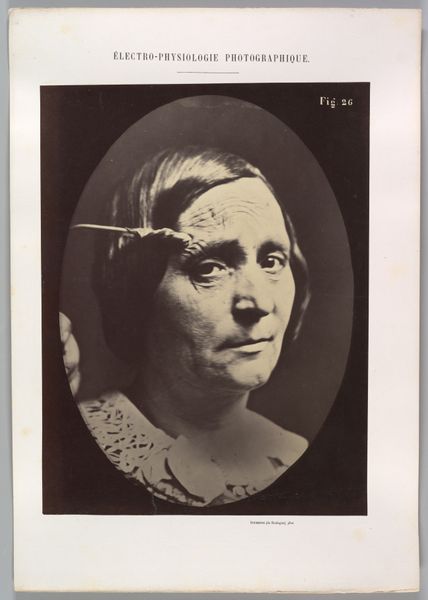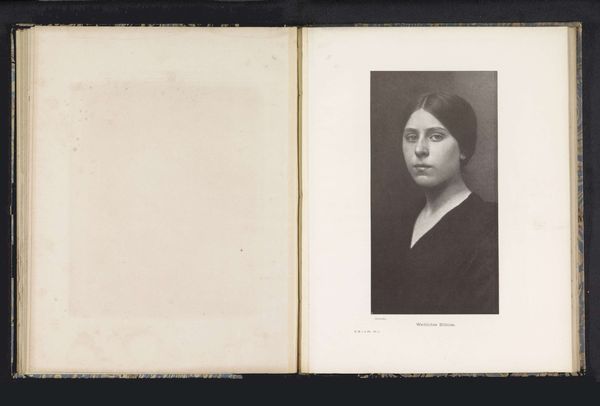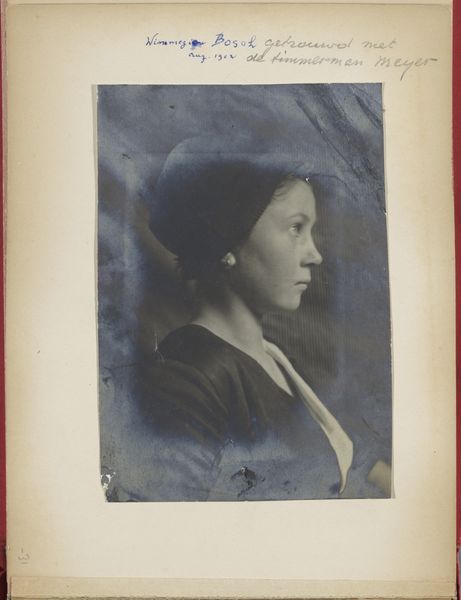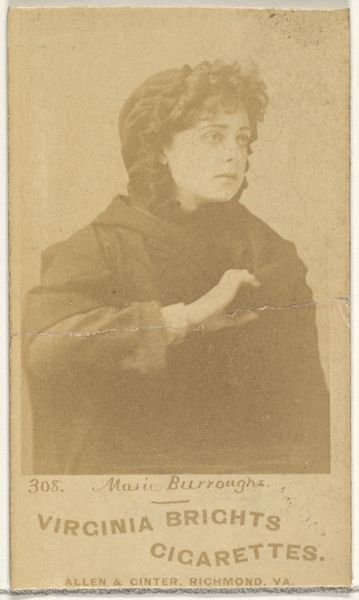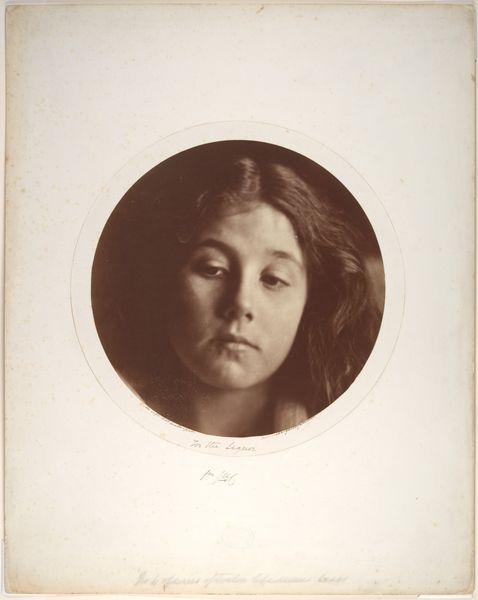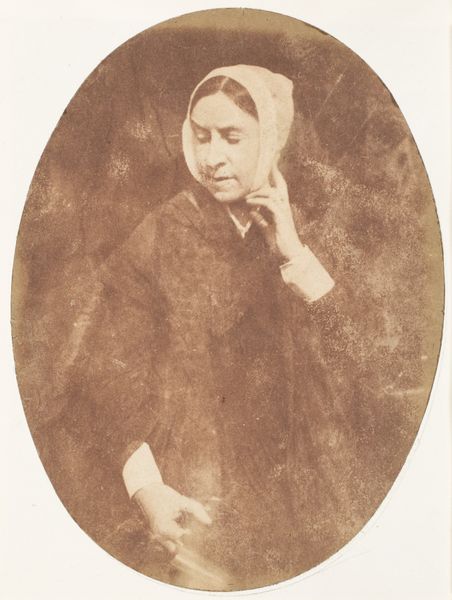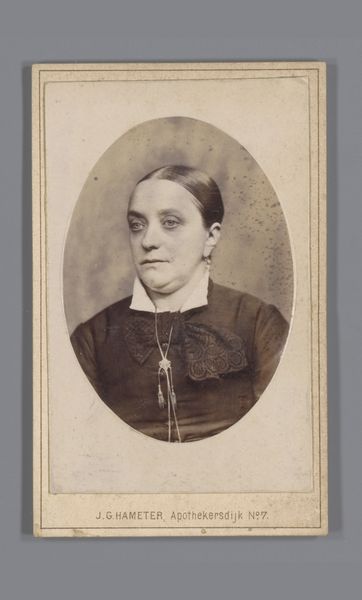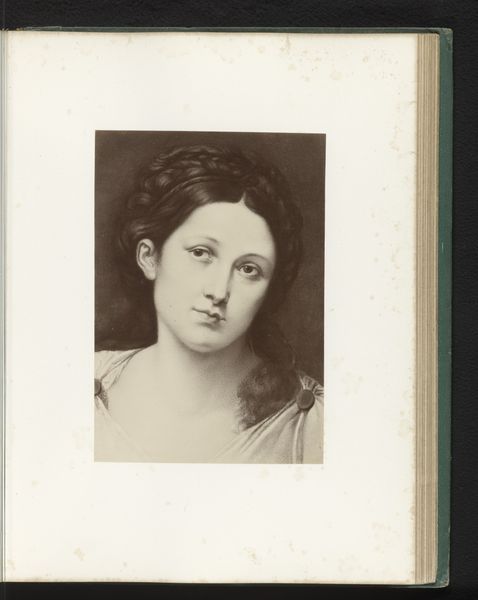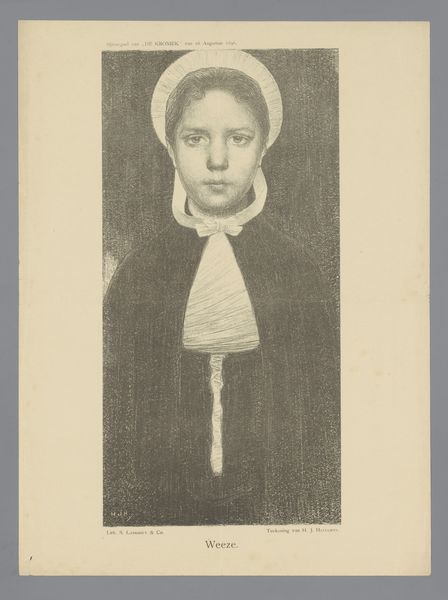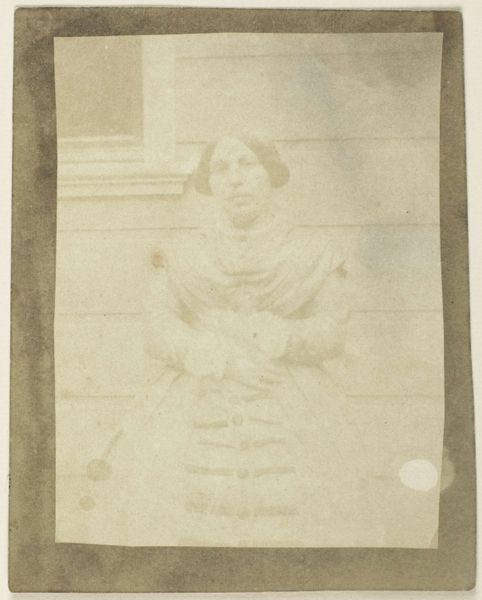
Figure 50: Affected weeping and face in repose 1854 - 1856
0:00
0:00
photography
#
portrait
#
16_19th-century
#
photography
#
academic-art
Dimensions: Image (Oval): 28.5 × 20.4 cm (11 1/4 × 8 1/16 in.) Sheet: 30.1 × 22.6 cm (11 7/8 × 8 7/8 in.) Mount: 40.3 × 28.4 cm (15 7/8 × 11 3/16 in.)
Copyright: Public Domain
Editor: Here we have "Figure 50: Affected weeping and face in repose," a photograph by Guillaume Benjamin Amand Duchenne, created between 1854 and 1856. It strikes me as…uncomfortable, even clinical, in its stark depiction of emotion. What do you see in this piece, beyond the surface portrayal of sadness? Curator: Indeed, the clinical aspect is key. Duchenne, a neurologist, was fascinated by mapping facial expressions to specific muscle groups. This photograph wasn't conceived as art, but as scientific documentation. He saw the face as a site of legible truths, attempting to decode emotion through physiological responses. We might ask, though: Whose truth is being captured here? Editor: What do you mean by whose truth? Curator: Well, consider the subject. We don't know her name, her social position. She’s been reduced to an object of study, her expression elicited—perhaps even manipulated—by Duchenne himself using electrical probes. Does this capture authentic emotion, or something coerced? Editor: So, the image raises questions about power and control, not just scientific inquiry. Curator: Precisely. It invites us to consider the politics of representation: who has the authority to define and display emotion, and what social biases might inform that process? The supposed objectivity of science is never truly neutral; it's always filtered through existing cultural lenses. We have to ask ourselves, does this advance scientific knowledge or further entrench harmful views around gendered expression? Editor: I never considered those power dynamics before. This changes everything I thought I understood about portraiture. Curator: Exactly. Looking at this through a critical lens helps us unravel the layers of meaning embedded within seemingly simple images.
Comments
No comments
Be the first to comment and join the conversation on the ultimate creative platform.
